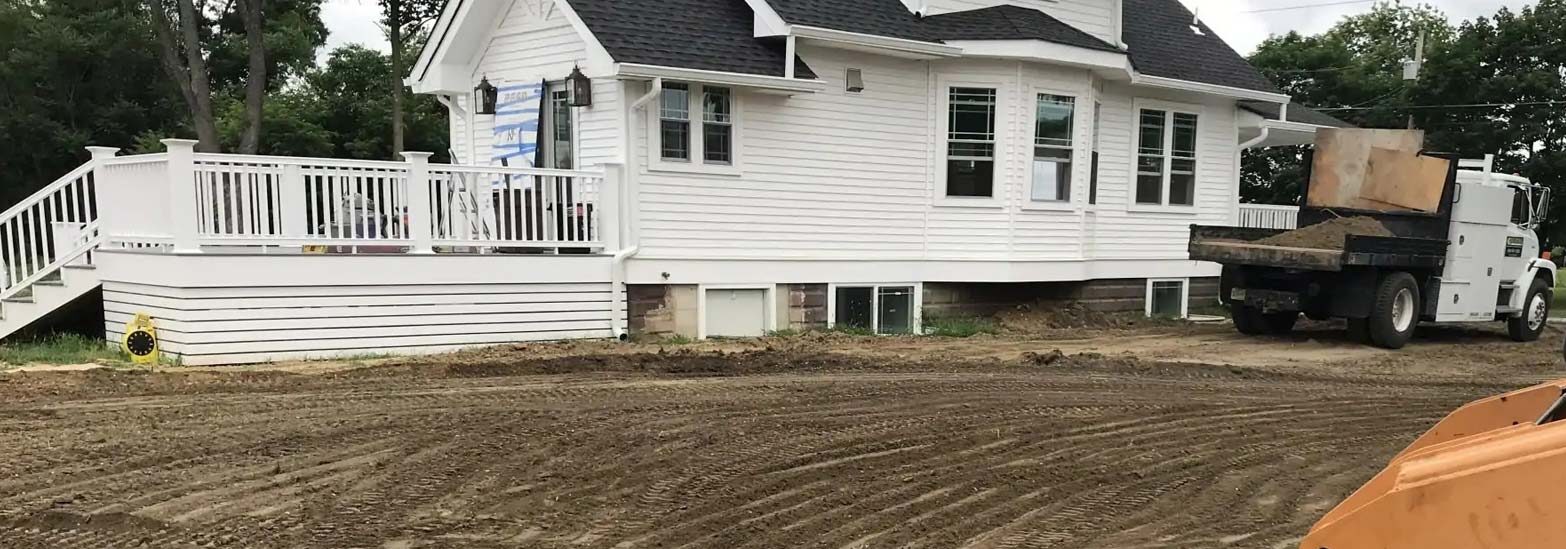
Yard grading is a fundamental aspect of landscaping and property management, ensuring proper drainage, preventing erosion, and creating a level surface for various outdoor activities. As the best hydroseeding contractor in Minnesota, we understand the importance of precise yard grading in achieving a beautiful and functional landscape. Let’s delve into the world of yard grading and explore how it can elevate your outdoor space to get best hydroseeding contractor in Minnesota.
Introduction to Yard Grading
Definition and Purpose of Yard Grading
Yard grading involves reshaping the land to create a smooth and uniform slope that directs water away from structures and towards appropriate drainage areas. This process is essential for managing water runoff, preventing soil erosion, and providing a stable foundation for landscaping features.
Importance of Proper Yard Grading
Proper yard grading plays a crucial role in maintaining the health and functionality of your landscape. By improving water management, preventing erosion, and creating a level surface, yard grading enhances the aesthetics, safety, and longevity of outdoor spaces.
Factors Affecting Yard Grading
Topography and Soil Composition
The natural contours of the land and the composition of the soil determine the grading requirements for a yard. Steep slopes, elevation changes, and varying soil types all influence the grading process and the overall landscape design.
Drainage Patterns and Water Flow
Understanding the natural drainage patterns and water flow on your property is essential for effective yard grading. By aligning the grading with existing drainage systems and addressing potential drainage issues, you can prevent water buildup and erosion problems.
Landscaping Goals and Usage
Your landscaping goals and intended use of the outdoor space also influence the grading process. Whether you’re planning a garden, installing a patio, or building a retaining wall, proper grading ensures that the land is prepared to accommodate these features.
Process of Yard Grading
Site Assessment and Planning
The first step in yard grading is to assess the site and develop a grading plan based on the existing conditions. This includes evaluating the topography, soil quality, drainage patterns, and landscaping goals to determine the optimal grading strategy.
Excavation and Leveling
Once the grading plan is in place, heavy machinery and grading equipment are used to excavate and reshape the land according to the desired grade. This may involve cutting into high areas, filling in low areas, and creating a gradual slope for water runoff.
Soil Amendment and Compaction
After the land has been graded, soil amendments may be added to improve drainage, stability, and fertility. Compaction is then performed to ensure that the soil is firmly packed and capable of supporting landscaping features and structures.
Benefits of Professional Yard Grading
Expertise and Experience
Professional yard grading contractors bring valuable expertise and experience to the table, ensuring that the grading process is done correctly and efficiently. They have the knowledge and skills to assess the site, plan the grading project, and execute the work to achieve optimal results.
Equipment and Resources
Professional contractors have access to specialized grading equipment and tools that are not typically available to homeowners. This allows them to perform the grading work with precision and accuracy, saving time and minimizing disruptions to your property.
Long-term Results and Satisfaction
By hiring a professional yard grading contractor, you can be confident that the grading work will be done right the first time, leading to long-term benefits and satisfaction. Properly graded landscapes are less prone to drainage issues, erosion problems, and structural damage, resulting in a beautiful and functional outdoor space for years to come.
Maintenance and Care of Graded Yards
Regular Inspections
After yard grading is complete, it’s important to regularly inspect the graded areas for signs of erosion, settlement, or drainage issues. Early detection and prompt action can help prevent further damage and maintain the integrity of the grading work.
Erosion Control Measures
To prevent erosion and soil loss, implement erosion control measures such as mulching, planting vegetation, or installing retaining walls as needed. These measures help stabilize the soil and protect against erosion caused by wind, water, or foot traffic.
Seasonal Maintenance
Perform seasonal maintenance on your graded yard to ensure that it continues to function properly throughout the year. This may involve making adjustments to the grading after heavy rainfall, replenishing mulch or vegetation, and addressing any changes in landscaping or drainage needs.


